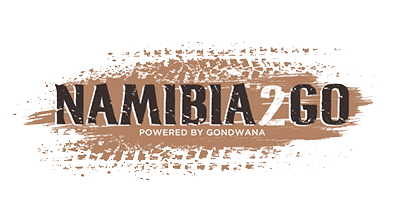The story of the Bullik family posted recently on our Padlangs page touched so many of our followers. Thank you for your comments and information shared. I had an opportunity while attending the Epukiro festival two weeks ago to visit the old farm ‘Alexeck – Ombakaha’, now owned by the Kaputu family.
The poignant story of the Bulliks, which has been embroidered over the years, as stories often do when people are different or tend to keep to themselves, is of how Anna Bullik lived with her seven children on the farm Alexeck (Alex’s corner) on far edge of the Omaheke in eastern Namibia. The family was self-sufficient and lived on their own terms. When Anna’s husband died of a heart attack, she chose to remain on the farm rather than return to her homeland, Poland, as the authorities would have liked her to do. She stayed and worked the farm with her children, eking out a living.

It wasn’t easy to find the turnoff to the farm as the sign was no longer there, and it was a 20km drive through the bush and through another farm before we finally reached Ombakaha. We were happy to see that the old Bullik farmhouse is still there, as is the graveyard. The graves of the seven Bullik family members buried close together made an impression on me. After living on the farm for eighty years, they left behind no descendants. It was the endpoint of their line in Namibia.
When I chatted to an old farmer on the way in, he remembered the family, describing them as ‘eenaardige mense’ – peculiar people. From the comments received on the Padlangs page, we hear that the second generation were well-respected and well-loved. Mariet Peters Enslin’s parents (Dirk and Saartjie Peters) had bought the farm from Anna Bullik, allowing the family to continue living there. Mariet writes how her father and mother had taken such good care of the Bulliks, and how most of the stories about them weren’t true, but rather were hearsay. She and her siblings had grown up with them and loved them like their own family. (Thank you Mariet, we would love to meet up with you at a later date and hear more.)
The last Bulliks had lived on the neighbouring farm, Zimnik, which Anna had bought and named after her maiden name. It has now been renamed ‘Paradise.’ The late Ovaherero historian and radio presenter, Dr Alexander Kaputu, lived on the farm after the Peters and the farm reverted to its original Otjiherero name ‘Ombakaha,’ referring to the ducks that are attracted to the river in the rainy season.

I contacted Dr Kaputu’s son, Hikuama, who also comments on the post, to find out more about his father’s time on the farm. He told me that Dr Kaputu had applied in 1992 for a resettlement farm and seven years later, after reapplying, was finally allocated the farm Alexeck – Ombakaha. He moved there permanently in 2011.
Hikuama also told me that Dr Kaputu had farmed Simmental cattle. At first, he farmed in the communal area, but without enclosures it was difficult to keep the breed pure. This he was able to do when he moved to Ombakaha. It was the same breed that the Bulliks had farmed, so the story came full circle. Coming from a farming background, I was pleased to see the cattle in such good condition.
I asked if the Kaputu family had lived in the house and Hikuama responded that they had for a time, but his father was a person to whom rituals and honouring the ancestors were important. The farmhouse wasn’t built according to Ovaherero customs, the doors facing south rather than east or west where the sun rises and sets. He built another house further away, more in line with traditional culture.
The history of a place always fascinates me. In the old days the land had been casually visited by Ovaherero, then it had been acquired by the Bulliks with a loan they received from the government. The Peters had bought the farm from them and Dr Kaputu had been allocated the farm in 1999.
A piece of land always holds such a rich history, of earth, animals and the many people who have lived there. Their joys and suffering, their struggles and successes, births and deaths, tears and laughter. All that remains today are old structures, graves and - of course - stories.
(We are going to revisit Ombakaha at the beginning of next year, sit down with a cup of coffee and a pen and paper, and hear more of the tales which have shaped the land. Watch this space for the next follow-up.)



%20(1).png)
.jpg)
.jpg)




.png)

SUBMIT YOUR COMMENT